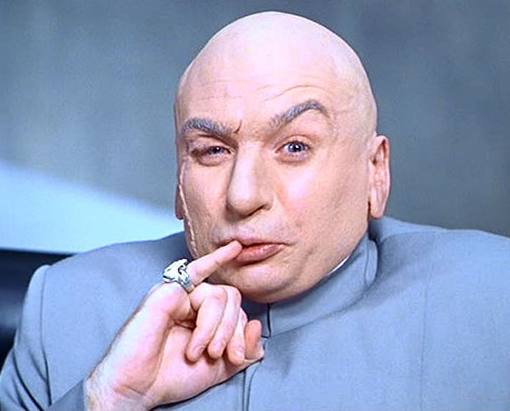Yes I first saw this on Zero Hedge, but the graphic included with the article is a classic.

The Federal Reserve creates money! Thank you! Finally, an honest admission.
http://www.nytimes.com/2011/01/11/bu...?_r=1&emc=eta1

The Federal Reserve creates money! Thank you! Finally, an honest admission.
http://www.nytimes.com/2011/01/11/bu...?_r=1&emc=eta1
When devising the program, Mr. Frost and his team decided to focus most on buying Treasury notes with an average maturity of five to six years. That is because the yields on these notes have the biggest impact on interest rates for mortgage holders, consumers and companies issuing debt, and on banks’ decisions to lend to businesses. Over the weeks and months of the program, his purchases should drive up the prices of these securities — because they will be in greater demand — and consequently push down their yields.
The trouble is, though yields fell sharply between August and November as the markets anticipated the new program, they have risen since it was formally announced in November, leaving many in the markets puzzled about the value of the Fed’s bond-buying program.
Mr. Frost, and his boss, Brian P. Sack, insist the program has succeeded. Mr. Sack, 40, joined the Fed 18 months ago to run the entire markets group. He has a Ph.D. from M.I.T. and worked most recently for a Washington consulting firm. In 2004, he wrote a paper with Ben S. Bernanke, the future chairman of the Federal Reserve, and another economist about unconventional measures for stimulating the economy in extraordinary times — just like large-scale purchases of Treasuries.
“We didn’t know then that the Fed would be putting it to the test,” he said.
He said the Obama administration’s $858 billion tax compromise with Congressional Republicans in December complicated the macroeconomic picture.
But the biggest reason for the rise in interest rates was probably that the economy was, at last, growing faster. And that’s good news.
“Rates have risen for the reasons we were hoping for: investors are more optimistic about the recovery,” said Mr. Sack. “It is a good sign.”
The trouble is, though yields fell sharply between August and November as the markets anticipated the new program, they have risen since it was formally announced in November, leaving many in the markets puzzled about the value of the Fed’s bond-buying program.
Mr. Frost, and his boss, Brian P. Sack, insist the program has succeeded. Mr. Sack, 40, joined the Fed 18 months ago to run the entire markets group. He has a Ph.D. from M.I.T. and worked most recently for a Washington consulting firm. In 2004, he wrote a paper with Ben S. Bernanke, the future chairman of the Federal Reserve, and another economist about unconventional measures for stimulating the economy in extraordinary times — just like large-scale purchases of Treasuries.
“We didn’t know then that the Fed would be putting it to the test,” he said.
He said the Obama administration’s $858 billion tax compromise with Congressional Republicans in December complicated the macroeconomic picture.
But the biggest reason for the rise in interest rates was probably that the economy was, at last, growing faster. And that’s good news.
“Rates have risen for the reasons we were hoping for: investors are more optimistic about the recovery,” said Mr. Sack. “It is a good sign.”



 Markets simply dont work that way...
Markets simply dont work that way...
Comment